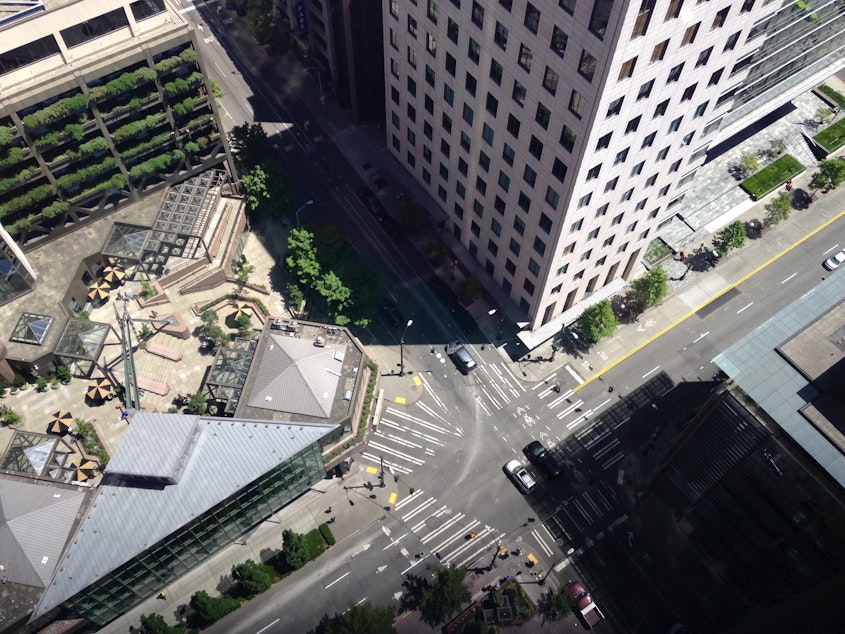3 Ways To Save Yourself If A Shooter Enters Your Office

Three things you can do when a mean-mugging man with an assault rifle blazes into your office, according to King County Sheriff John Urquhart:
“The first is run,” Urquhart said. “Go out a back door, go out the front door if you can, break out a window, climb out a window.”
Plan B: Hide. Go into an office, barricade the door and keep quiet until you’re sure police are on the other side of that door.
Your third option is to be fierce.
“If you can't run and you can't hide, you're going to have to fight,” Urquhart says. “You're going to have to take out that shooter, because otherwise you're probably going to get killed anyway. Get a fire extinguisher, get a chair; get something heavy. Go after him and try to take him out before he takes you out.”
Brazen? Yes. Also totally new advice.
“This is something we’ve never told the public before, but we need to be honest now,” Urquhart said.
He stopped short, though, of saying you buy a gun.
“Owning a gun, carrying a gun is a very personal decision,” he said. “Make sure you know how to use that gun. But, boy oh boy, you better know what you’re doing.”
He said police can’t keep mass shootings like the ones in Roseburg, Oregon, or San Bernardino, California, from happening. And, Urquhart warned, that police probably aren’t going to be on the scene in the first critical minutes of an attack.
“People are going to have to take responsibility for protecting themselves in an active shooter situation,” he said.
Police made major changes in tactics after the 1999 massacre at Columbine High School in Colorado. There, police waited for heavily armed SWAT teams to arrive before going in to the school. Some of the wounded lay for hours before being evacuated.
Urquhart said his force now follows the new tactic of going immediately into a shooting scene and not waiting for help, although preferably a four-person team would be used.
“That’s a complete change in tactics,” he said, “but it’s what we have to do.” He has told his deputies to carry a weapon even when they’re off-duty.
Urquhart said it’s too easy for dangerous people to get hold of guns, whether that’s a mentally ill person or a person radicalized by ISIS.
“There are criminals and would-be criminals who should not get firearms,” he said. “We have not yet figured out how to keep that from happening. We need to have that conversation.”
He criticized a 1997 law that has prevented scientists from using federal money to study gun violence.
“Right now they’re prohibited from doing that, and that law needs to be changed,” he said.
So what’s the average person to do? Urquhart says people have to plan.
“People are going to have to save themselves,” he said. “They have to think ahead, preferably practice what they’re going to do if a shooter walks through that door.”
Produced for the Web by Gil Aegerter.

